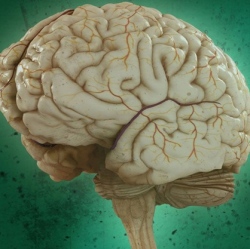
As human beings, our memories are part of what make us ourselves. But the process of how memories form in our brains still eludes scientists. If we could understand exactly what happens on a molecular level during memory creation, perhaps we could find a solution to brain diseases that affect memories, like Alzheimer’s.
A team of scientists at Albert Einstein College of Medicine have found a way to study the process: they’ve learned how to tag molecules in the brain that allows them to watch memories as they form.
The neurons of the brain are very sensitive to changes, making them difficult to observe. However, the researchers figured out that using green fluorescent tags on molecules of mRNA (messenger RNA) could make watching the memory-making process possible.
mRNA controls a protein which is an important element of memory creation, and the tagging allowed the scientists to watch what happens as a memory is created and formed.
So what did the researchers observe? After stimulating neurons in the hippocampus of a mouse brain, the brain created new mRNA molecules. This caused neurons to join together, sort of like what happens when you entwine the fingers of your hands. Memories occur when these connections stay in contact with each other, and researchers were able to watch the entire process as it happened.
